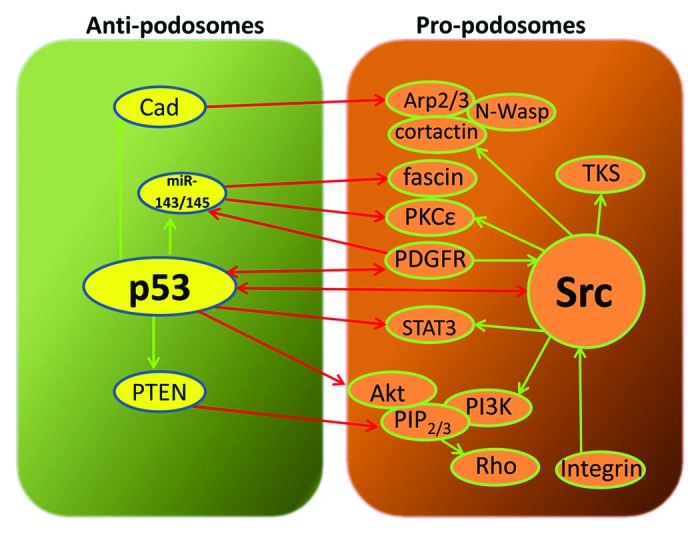
Figure 1. The anti- and pro-podosome pathways staged by p53 and Src, respectively, in vascular smooth muscle cells. p53 and Src play antagonistic roles in the regulation of podosome formation. The mechanism regulating the p53–Src interplay is not fully understood. Recent data suggest that p53 suppresses podosome formation by upregulating caldesmon, PTEN, and miR-143/145, which in turn, inhibit pro-podosome signaling nodes downstream of Src. Thus, caldesmon inhibits Arp2/3-mediated actin polymerization or stabilizes actin-stress fibers; PTEN antagonizes PI(3,4,5)P3 and PI(3,4)P2 formation and inhibits RhoGTPases; miR143/145 suppresses fascin, PKCε, and PDGFRα in the pro-podosome pathways. p53 also acts by downregulating the expression of Src and its downstream effectors, such as STAT3 and Akt. Red and green arrows represent inhibition and activation relationship, respectively.
